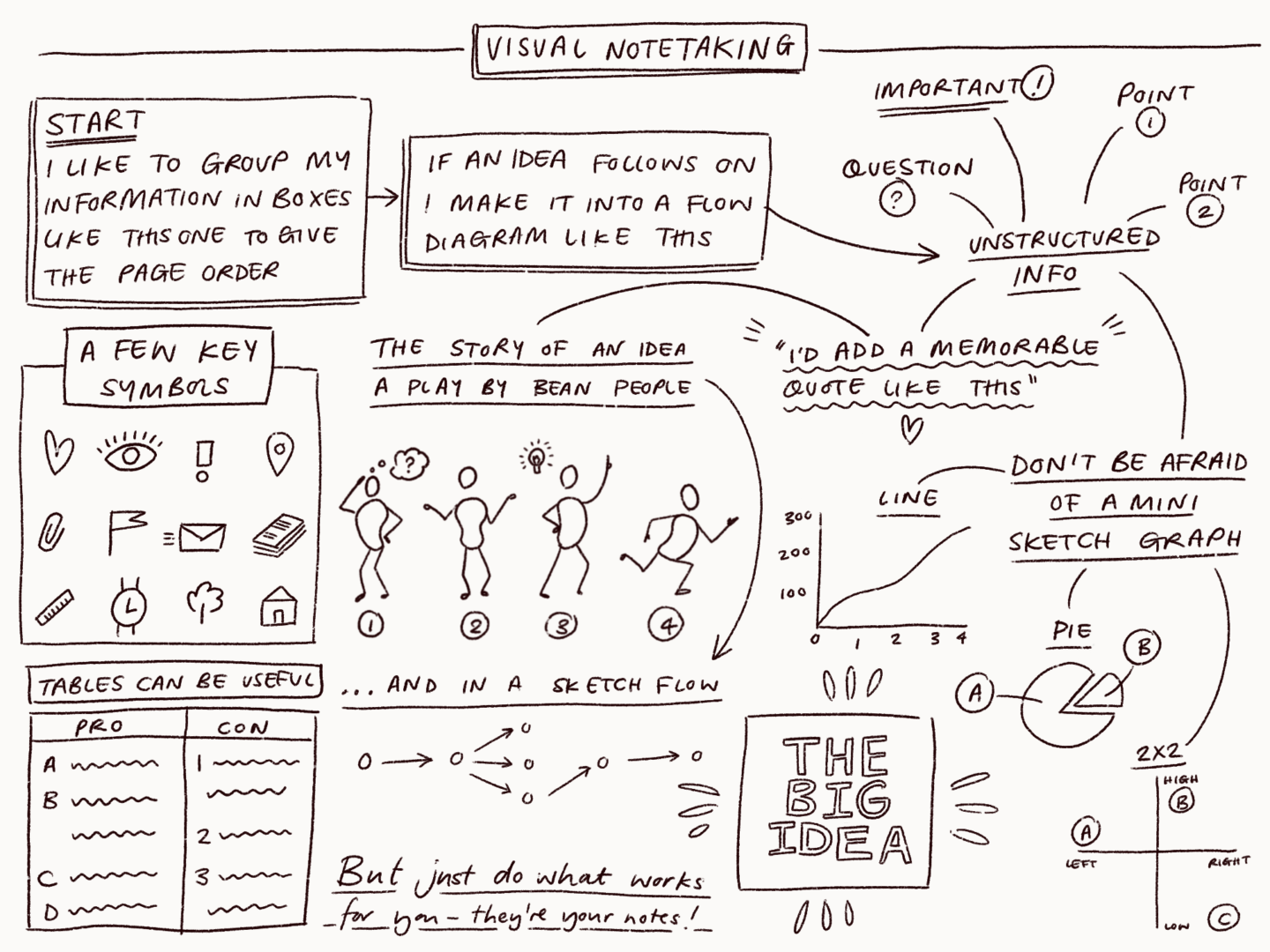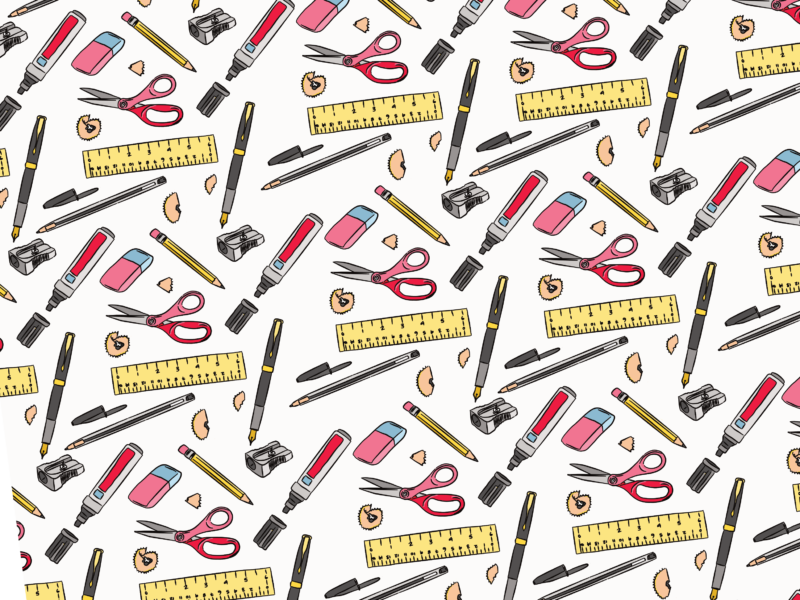I take a lot of notes, at work, for blog posts, when I’m working on creative projects. I’m the kind of person who thinks best when they’re writing their ideas down, with pen (or more often pencil) and paper. I quite often get asked questions about my notebook, and how I put my notes together because I use a mixture of traditional notes and sketch notes.
Visual notes help you remember more of what you write down. Don’t just take my word for it, it’s science. It has been found that “visual stimulation is more effective than audio stimuli at achieving higher memory retention and recall,” and “specifically, it seems that the use of visual stimuli with the act of writing seems to elicit the best recall.” That means that notes with a visual element are the best kind of notes, not just because they’re the nicest to look at, but because they’re a great learning aid.
Now I know when someone says “visual notes” that can be kind of intimidating. It sounds like you have to be a great artist, or be able to do one of those live illustrated TED talks, which by the way are so cool. But it doesn’t.
For me, visual notes are about organising and enhancing the written elements of your notes in a way that helps create a picture in your mind that sticks.

There are a few key things I like to keep in mind when making visual notes, which I think will help anyone who wants to start giving them a try. I’d also recommend having a look at Core77’s sketch notes channel if this is something you’d like to know more about.
- It’s all about flow – I like to put chunks of text in containers to keep single ideas defined, then link those ideas together in some kind of flow that makes them easy to view and remember later. I tend to either go with your classic arrows and make a process out of the information if that suits or just group ideas together a bit like a mind map.
- Tell a story – as part of that flow, it’s always great to tell a story if you can because we’re much better at remembering stories than facts. You can either do that through linking up your information into a step by step style flow or quite often I just add in a little scene sketch using my favourite quick doodle friends bean people!
- Icons help you identify – I said before that you don’t need to be able to draw to make visual notes, the only real drawings I do (you can obviously go all out, but I stick with a strict effort-reward ratio) are icons that help me identify ideas. Those can be super basic diagrams or symbols, whatever works for you.
- Highlight the phrases that you want to stick – this is something that I think is super important in all note taking, and something you can add your own style too. You could play with lettering styles, colour, size, boxes, anything really. I tend to just underline and add some sparkle lines to my favourite quotes.
- Frame information and data – where the information you’re capturing fits into a framework nicely use it. That can mean showing numbers in super basic graphs, dividing pro/con lists into two sections, or detailing a process as a flow chart. Use your common sense, what’s the easiest way to view what you’re trying to say?
These kinds of notes can work in pretty much any situation where you would normally take notes, whether that’s when you’re reading, watching something, or in a meeting (they’re particularly good in client meetings because they do look a little more impressive than bullet points).


